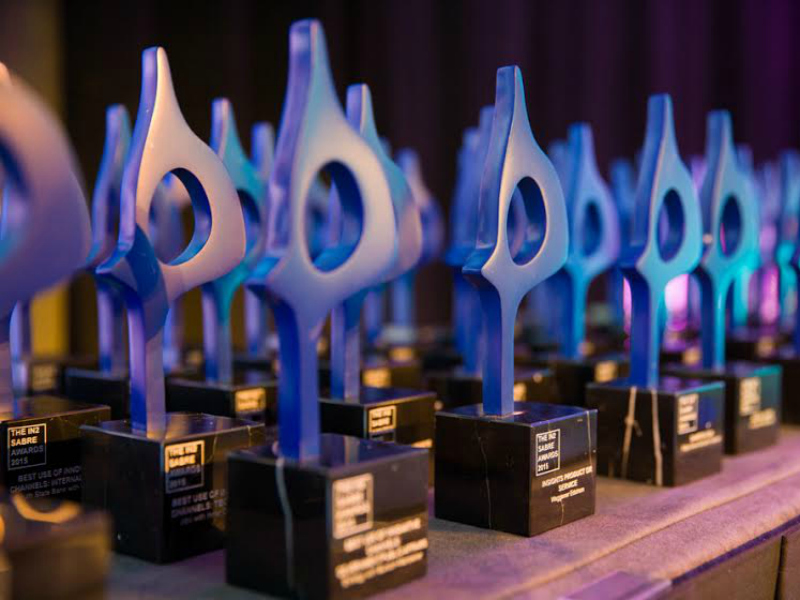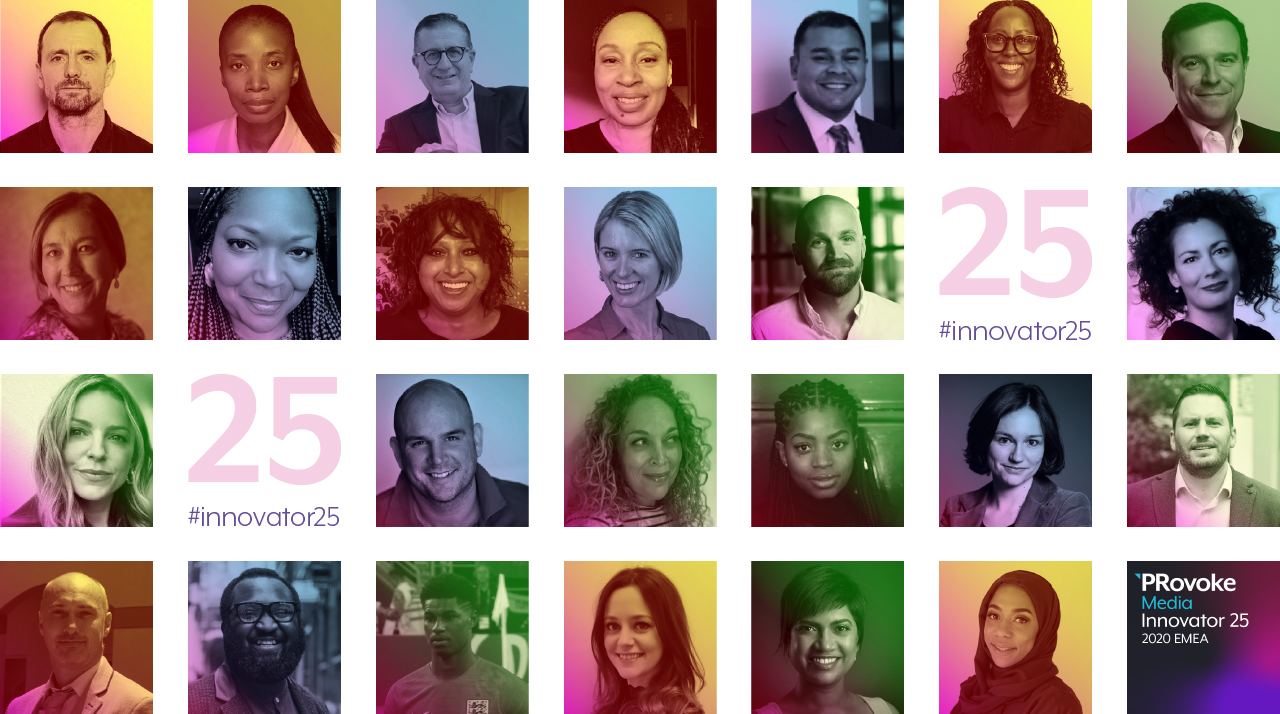
The Innovation SABRE Awards — North America 2020
Showcase your innovation. Don't miss your last chance to enter November 4!

 Podcasts
PodcastsCatch the latest PR news & updates with PRovoke Media's PR Podcasts. Lifting the lid on key industry stories & trends, join our listeners of PR podcasts today.
 Videos
VideosLatest video interviews and campaigns from PRovoke Media, previously known as the Holmes Report.
Long-form journalism that analyzes the issues, challenges and opportunities facing the business and practice of PR.
 Profiles & Interviews
Profiles & InterviewsExplore PR profiles and interviews with leaders from the marketing and PR worlds.
 Crisis Review
Crisis ReviewPR Crisis & Business Crisis review. PRovoke Media's annual analysis of the top reputation crises to rock the corporate sector. Read on here.
 Coronavirus
CoronavirusPRovoke Media's coverage of the Covid-19 crisis, focusing on corporate communication, public affairs & PR industry fallout.
 Trend Forecasts
Trend ForecastsPRovoke Media's PR Trends round up. PRovoke Media's annual forecast of PR trends and news that will impact the PR world in the year ahead...
 Social & Digital
Social & DigitalDedicated to exploring the new frontiers of PR as it dives deeper into social media, content and analytics.
 Technology
TechnologyOur coverage of key technology PR trends and challenges from around the world of digital communications.
 Consumer
ConsumerFrom brand marketing to conscious consumerism, coverage of key marketing and PR trends worldwide.
 Employee Engagement
Employee EngagementPRovoke Media's coverage, analysis and news around the rapidly-shifting area of employee engagement and internal communications.
 Sports Marketing
Sports Marketing Sports PR news, diversity & inclusion trends, views and analysis from PRovoke Media. Subscribe today for the very latest in the world of sports communications.
 Global PR Agency Rankings
Global PR Agency RankingsPRovoke Media's definitive global benchmark of global PR agency size and growth.
Enter PRovoke Media's 2024 Global 250 Agency Ranking and/or our Agencies of the Year competitions now.
 Agencies of the Year
Agencies of the YearPRovoke Media's annual selections for PR Agencies of the Year, across all of the world's major markets.
 Innovator 25
Innovator 25PRovoke Media profiles marcomms innovators from across North America, EMEA and Asia-Pac.
 Creativity in PR
Creativity in PRIn-depth annual research into the PR industry's efforts to raise creative standards.
 Asia-Pacific Communication Index
Asia-Pacific Communication IndexAPACD/Ruder Finn annual study of Asia-Pacific in-house communications professionals.
 SABRE Awards
SABRE AwardsThe world's biggest PR awards programme, dedicated to benchmarking the best PR work from across the globe.
 PRovokeSummit Global
PRovokeSummit GlobalThe biggest PR conference of the year, a high-level forum designed to address the critical issues that matter most.
 PRovoke Media Regional Series
PRovoke Media Regional SeriesA global network of conferences that explore the innovation and disruption that is redefining public relations.
 Agencies of the Year
Agencies of the YearUnrivalled insight into the world's best PR agencies, across specialist and geographic categories.
 Roundtables
RoundtablesOur Roundtables bring together in-house comms leaders with PR firms to examine the future of communications.
 Agency Playbook
Agency PlaybookThe PR industry’s most comprehensive listing of firms from every region and specialty
.jpg) All Jobs
All JobsFind the latest global PR and communications jobs from PRovoke Media. From internships to account executives or directors. See all our PR jobs here.
PRovoke Media's editorial series published in collaboration with partners.

As corporate communications director for Africa’s biggest food producer, Nevashnee Naicker has done remarkable work steering Tiger Brands’ reputation recovering after the deadly 2017-2018 listeriosis outbreak and class action. The company’s reputation scores are positive for the first time in many years, despite the additional challenges of a volatile economic backdrop and the pandemic. Naicker’s ambitious three-year reputation turnaround strategy is premised on finding innovative ways to engage with empathy and authenticity, and a simple philosophy – “credibility is earned through action” – that has resulted in a new corporate narrative that has redefined Tiger in the hearts and minds of stakeholders across the continent. Naicker – who joined the firm five years ago after 12 years at Sasol – has used advocacy, ambassadorship and thought leadership, with a focus on earned and owned PR, and these efforts have resulted in a notable positive shift in sentiment towards Tiger Brands, as well as engagement among staff. She has created a new foundation from which the company can launch a refreshed corporate identity in 2021 to celebrate its centenary year.
Where is the most urgent need for innovation within the PR/communications industry?
There isn’t any aspect of our lives that have not been touched (or pushed) into the digital arena. The argument for digital communication is compelling – nimbleness, reach, speed, cost effectiveness and analytics virtually at your finger-tips. However, the flip side and unfortunate consequence is a highly-contested space characterised by an assault of marketing communications as brands (and internal functions too) all compete for attention. More than ever communications needs to find ways to strip away the clutter to reach their audiences in ways that matter. This means re-evaluating who these audiences are, and crucially working far smarter to align their shifts in behaviour to the operational realities of the business.
Without a doubt, innovation in the communications industry lies in using big data to understand these shifts. But it is more than information, it is about unlocking powerful insights that allow communicators to become really discerning about how to reach their diverse stakeholders. More than ever, consumers and ordinary citizens are searching for meaning - and organisations and brands that can deliver relevance will outcompete in the war for share of heart, share of mind and, ultimately, share of wallet.
How would you describe the communications/PR industry's level of innovation compared to other marketing disciplines?
PR and Communication has surged ahead of other marketing disciplines as consumers have become more discerning, and organisations seek increasingly to become more relevant and relatable. The role and ability of PR and communication professionals in understanding complexity and the interplay of an organisations various internal and external initiatives on its reputation, has become far more pronounced in recent years. The lockdowns and shutdowns we have all experienced in 2020 have only served to massively amplify this.
So while more than ever, companies are concerned about being purpose-driven, and coherent and consistent in the ways they show up that demonstrate their purpose, the real magic is in how they behave. Communicators who innovate their work to help companies and brands deliver behaviours are the ones who are owning the future of these reputations.
How have the events of 2020 impacted innovation in the PR and communications industry?
I think that we can all agree that even before Covid-19, communications was already operating in a highly disrupted space, driven significantly by the opportunities and impacts of digitalisation, the democratization of information and proliferation of social media. However, the events of 2020 have catapulted the role of communicators as organisations have had to, with very deliberate intent, ‘innovate for meaning’. This has led to a surge of bold and brave PR, as organisations clambered to stay relevant, show care, and demonstrate their dexterity in navigating through the pandemic. Companies have had to become increasingly brave and get behind their brands and brand identity in far more visceral ways.
As a consequence, the collection of internal activations, social initiatives, partnerships and alliances that were forged as companies sought to make a difference, have resulted in a new set-point for organisational impact and meaning – and businesses must continue to leverage this in their quest for relevance and relatability. More will be expected of business and more will be demanded from the PR and communications fraternity to find innovative solutions to stay ahead of the relevance curve.
Where is the PR industry's greatest opportunity for taking the lead on innovation?
As we navigate our way through the pandemic and tally the human and financial cost on organisations and livelihoods, and we all strive toward economic recovery, glaring and gaping challenges present themselves that will require moonshot thinking.
The PR industry has a tangible role to play in facilitating cross business, cross-industry and private-public partnerships that galvanise multi-stakeholder fora to collaborate on these issues. New channels and tools that promote, stimulate and champion these initiatives will become increasingly important to help us pivot to new ways of working and living. Not innovation per se, but now more than ever communications has a vital role to play in keeping companies and brands “real”. Holding a mirror to them in a world where stakeholders and customers are not where they were a year ago – and critically in using the comms function to innovate a new connection and social contract with these groups.
What is the ideal working scenario for innovation?
It might sound clichéd, but practically, it is about stimulating an entrepreneurial culture, an achievement mindset and an environment that constantly stimulates questioning. Organisations that promote a healthy challenge of their ideas, and who lower the barriers for internal and external stakeholders to participate in problem solving, will outcompete those who stick to rigid innovation models and reliance on experts to solve their problems.
Has 2020 changed the way you define/approach innovation? How?
I have always applied agile innovation principles and systems thinking throughout my career because the problems that need to be solved within the PR, communications and marketing spaces are dynamic and impact relationships, perception and reputation. If anything, 2020 has deepened this approach and its relevance. Tapping into the insights of cross-functional teams within the supply chain environment, marketing, HR, legal departments, as well as relevant external partners, has resulted in us with being able to quickly and cost effectively solve critical problems – like how best to keep our operations fully functional during the pandemic while prioritising and demonstrating the physical and emotional safety of our employees at the same time; and how to ensure business continuity in the face of interruptions because of staff infections so that we could assure our government and consumers security of food supply throughout our lockdown.
2020 has also reminded me of something I have always known: the role of empathy and humanity in every single thing we do, be it internal or external. Communications is a human thing. The more human we are, the more we connect. The more we connect the greater the trust we generate and the more sustainable our reputations. If anything, 2020 has exposed the companies and brands who simply just don’t get it.
What is the most innovative comms/marketing initiative you've seen this year?
Apart from cheeky and clever advertising within the FMCG space, some of the biggest innovations have come from the educational sector, particularly within the spheres of primary and secondary school learners. The pace and agility that has been required – and demonstrated in great part – by educational institutions to re-invent themselves and find innovative ways of engaging and testing their students, has been phenomenal.
What is the most important lesson you've learned this year?
Find your brave. To really pivot and convert ideas into opportunities, you need to challenge the conventional and have the courage to follow through. The biggest risk to progress is playing it small. We live in highly disrupted times and disruption is very much new normal. This means that the pace at which we do things must fundamentally change. Think relevance on a national, regional and global scale.
Describe a moment in your career that you would consider innovative.
I think I’ve been blessed with a career that forced me to be innovative throughout. But perhaps the greatest forces for innovation for me personally have been navigating serious operational and reputational crises. When the stakes are high and emotions run higher, and the company’s licence to trade, social licence to operate and license to innovate hangs in the balance. These are powerful motivators for the kind of thinking and actions that require deep levels of innovation.
Any habit/activity that you have added to your life this year that you hope to take forward post-pandemic?
The practice of gratitude and promoting the practice of gratitude with my teams and peers. This helps puts things in perspective, helps us focus on what’s working and unleashes the energy required to triumph through difficulty.
How can the PR industry make real progress in diversity, equity and inclusion (DE&I) and what is the biggest obstacle?
If you want to have a steady state PR and ensure systematic and incremental improvements in the quality of your PR and communications, then hire or tap into the expertise within the fraternity. But if you are looking for disruptive change and high degrees of innovation through out of the box thinking, then go seek talent and insight from some another place – a different industry, different geography and different function.
The biggest obstacle to progress and innovation lies in believing that we are the lone experts and that the only and best ideas will only come from our expertise. Adopting agile innovation techniques that require fluidity of teams and resources will help shake those beliefs. Open innovation challenges that seek to tap into talent on a short-term basis and for very specific projects, allow you to bring in fresh thinking without the burden of a bloated organisational structure.
What are you thinking about most these days?
What can we do to solve some of the world’s most pressing challenges. I imagine what the potential of humanity would be when there’s food in every belly and roof over every head, and think about what we can do individually, collectively, as companies and countries to solve for these challenges that will help billions of people live better lives.
Your bold prediction for 2021…
Expect more disruptions - and with it more innovation - as the human spirit thrives to overcome calamity and create a “new normal”. Recognising also, that nothing will ever be normal again.







Intelligence and insight from across the PR world.
About PRovoke Media Contact Us Privacy & Cookie PolicyWe feel that the views of the reader are as important as the views of the writer. Please contact us at [email protected]
Signup For Our Newsletter Media Kits/Editorial Calendar Jobs Postings A-Z News Sitemap© Holmes Report LLC 2024